Exploring Vivobarefoot for Flat Feet: An In-Depth Analysis
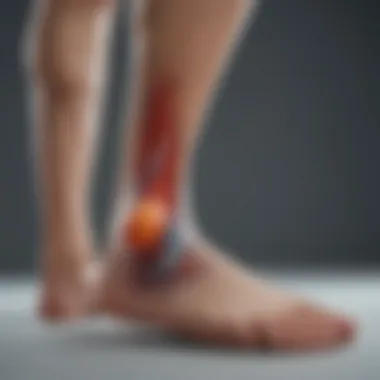
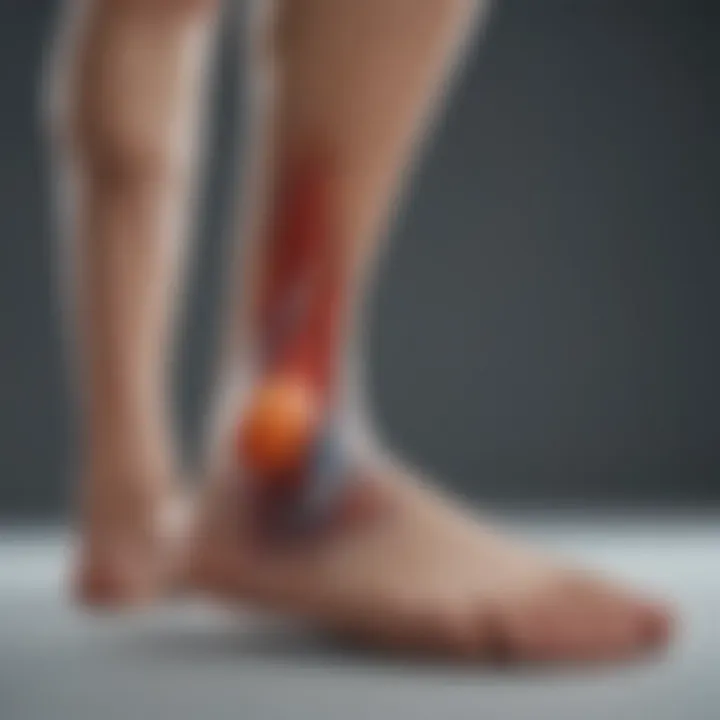
Intro
This article examines the potential benefits and drawbacks of using Vivobarefoot shoes, particularly for individuals who have flat feet. The use of minimalist footwear has gained attention in recent years due to its purported advantages for various foot types and conditions. With flat-footedness being a common issue, understanding how Vivobarefoot shoes integrate into this context is essential.
The structure of this analysis will focus on how these shoes may affect foot health, anatomical considerations, and personal experiences. By evaluating the underlying mechanics of flat feet and the ergonomic design of Vivobarefoot, this piece aims to offer an informed perspective on whether these shoes are a viable choice for individuals with flat feet.
Research Overview
Summary of Key Findings
Research indicates that flat feet can lead to discomfort and a range of problems including pain in the arches, knees, and lower back. The use of supportive footwear has often been promoted as essential for managing these issues. However, minimalist shoes like Vivobarefoot advocate for a different philosophy that prioritizes foot functionality over excessive cushioning and arch support.
This analysis reveals the following key points:
- Minnimalist footwear may not provide the same level of arch support commonly recommended for flat-footed individuals.
- Users report a mixed experience; some find reduced discomfort over time, while others may struggle to adjust.
- Long-term use of minimal shoes could positively influence foot mechanics, strength, and overall arch development.
Background and Context
Flat feet occur when the arches of the foot do not develop properly or collapse, resulting in the entire sole coming into contact with the ground. This condition can lead to complications, necessitating footwear designed to offer support and alignment. Traditionally, this has meant shoes with significant cushioning and structured arch support.
In contrast, Vivobarefoot shoes are designed to be lightweight, flexible, and without pronounced arch support. This contrasts sharply with conventional orthotic-driven footwear. The assertion is that by allowing the foot to function naturally, users may strengthen foot and lower leg muscles, thereby promoting better alignment and comfort.
Methodology
Experimental Design
This analysis draws from a variety of studies, user testimonials, and scientific research to evaluate the effects of Vivobarefoot shoes on individuals with flat feet. A comparative approach highlights the difference between traditional footwear strategies and the minimalist approach offered by Vivobarefoot.
Data Collection Techniques
The information presented in this article is collected from peer-reviewed journal articles, user surveys posted on platforms like Reddit and Facebook, and clinical studies outlining the biomechanics of foot function. The collected data aims to present a comprehensive view of how minimalist shoes might serve those with flat feet.
"Customizing footwear to fit individual needs can provide better support and comfort over generic solutions."
This detailed examination of Vivobarefoot shoes and their implications for flat-footed individuals aims to provide a well-rounded discussion on an important topic. It emphasizes the significance of understanding both the advantages and limitations of shifting towards a minimalist footwear approach.
Preamble to Vivobarefoot
The topic of Vivobarefoot is significant for anyone exploring footwear options, especially people with flat feet. Understanding this brand provides insights into the functionality and design that may cater to special foot needs. Vivobarefoot shoes are crafted with an intention to support natural foot movement. This natural design minimizes restrictions, which is crucial for those experiencing discomfort or pain associated with flat-footedness. Therefore, it is essential to analyze the core elements of the brand and how they intertwine with the needs of flat-footed individuals.
Overview of Vivobarefoot Brand
Vivobarefoot was founded in 2012, inspired by a simple idea: to provide footwear that mimics the natural structure and function of the human foot. The brand promotes the idea of barefoot movement by offering shoes that are lightweight, flexible, and designed to allow the foot to move freely. Each model emphasizes durability while maintaining a minimalist approach. This design philosophy is particularly relevant for those with flat feet, as standard shoes often enhance the structural issues rather than assist.
Philosophy Behind Minimalist Footwear
The philosophy behind minimalist footwear like Vivobarefoot centers on allowing the foot to function as it naturally should. Such footwear aims to enhance a person's awareness of their foot’s placement and movement. It reduces reliance on artificial supports, which can lead to weaker muscle performance over time. For people with flat feet, this philosophy can be beneficial, promoting stronger foot muscles and potentially better arch support through natural strengthening.
Additionally, minimalist footwear encourages proprioception, or the body’s ability to sense its position and movement in space. Enhanced sensory feedback from the ground can lead to better balance and stability. Thus, for individuals with flat feet, transitioning to Vivobarefoot can result in positive changes, provided it’s done gradually and with attention.
Understanding Flat Feet
Understanding flat feet is crucial in evaluating how Vivobarefoot shoes might work for individuals suffering from this condition. Flat feet, also known as pes planus, is characterized by a reduced or nonexistent arch in the foot. This anatomical feature can lead to various complications, including discomfort during physical activity, difficulties with balance, and potential long-term issues if not addressed appropriately. Thus, recognizing the significance of flat feet helps in understanding the importance of tailored footwear solutions, such as Vivobarefoot.
Anatomical Features of Flat Feet
Flat feet comprise several specific anatomical traits. First, consider the structure itself. In an ideal foot, the arch acts like a spring, absorbing shock and distributing weight efficiently. In flat feet, however, the arch is either low or completely flattened, resulting in a foot that lies more parallel to the ground.
Such foot structure alters the mechanics of walking and running significantly. The increased contact with the ground can create excess strain on ligaments and tendons as the body adjusts to support this altered shape. Flat feet can also lead to overpronation, which is when the foot rolls inward excessively during movement. This motion can impact the alignment of the entire body, contributing to knee and back pain over time.
Furthermore, flat feet are often correlated with specific muscular imbalances. The muscles that support the arch may be weaker, leading to decreased stability while standing or moving. This deficiency can negatively impact athletic performance and day-to-day activities, making it essential to focus on proper footwear to mitigate these effects.
Causes of Flat Feet
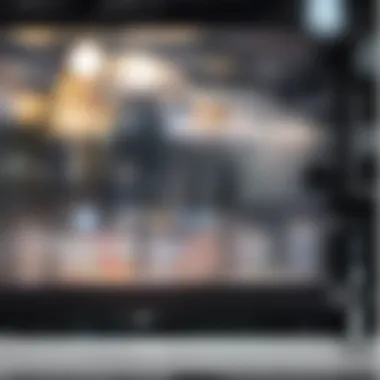

Several factors contribute to the development of flat feet. Understanding these causes is vital for both prevention and effective management. One significant factor is genetics. Many individuals inherit the trait of flat feet, often stemming from their family history. Children frequently have flexible flat feet that may improve with age as muscles and bones develop, however, this is not guaranteed for everyone.
In addition to genetic predisposition, flat foot can arise from injuries or degenerative conditions like arthritis. Another common cause is the weakening of the structures that maintain the arch, often due to age or repeated stress. Conditions such as posterior tibial tendon dysfunction can lead to the progressive flattening of the foot.
Moreover, anatomical abnormalities, such as tarsal coalition, can result in rigidity in foot structure, making arches susceptible to collapse.
In summary, understanding flat feet involves recognizing both its anatomical features and the factors leading to its development. This knowledge is essential for guiding potential users on the benefits and drawbacks of minimalist footwear, particularly Vivobarefoot products, which cater to those with specific foot conditions.
Foot Mechanics and Functionality
The study of foot mechanics is crucial when evaluating the role of footwear on individuals with flat feet. Understanding how the foot moves—its kinematics—along with the significance of arch support helps inform individuals about their options for managing flat-footedness. In this section, we analyze the mechanics of foot movement, the challenges that flat-footed individuals face, and the implications for footwear design, focusing on Vivobarefoot shoes.
Kinematics of the Foot in Flat Feet
Kinematics refers to the motion of points, bodies, or systems, and it plays a vital role in how the foot functions during walking and running. For individuals with flat feet, there is an altered pattern of movement. The pronation—or inward roll of the foot—occurs to a greater extent, which can contribute to instability and discomfort during various activities.
- Foot Dynamics: In flat-footed individuals, the lack of a defined arch shifts the dynamics, leading the foot to absorb shocks in a different manner. The foot may not perform as efficiently during propulsion.
- Weight Distribution: The distribution of weight also changes in those with flat feet. This can create pressure points that result in fatigue and pain.
- Movement Patterns: Altered movement patterns often lead to compensatory actions in other parts of the body. This can result in knee, hip, and lower back pain over time.
By studying the kinematics of the foot in flat feet, we gain insights into how to design footwear that mitigates these issues, and this is where the minimalist design of Vivobarefoot may align with the needs of flat-footed individuals.
Importance of Arch Support
Arch support is often touted as a solution for flat feet, but its role is nuanced. While support can provide temporary relief, it's essential to understand the broader implications for foot health.
- Natural Arch Function: The foot is designed to function with a natural arch. Introducing excessive support may hinder the foot's ability to adapt and strengthen its intrinsic structures.
- Balance and Stability: Adequate arch support helps improve balance during activities. However, if the arch support is too rigid, it may restrict the foot's natural range of motion, which is counterproductive in the context of minimalist footwear.
- Varying Needs: Not all individuals with flat feet require the same type or amount of arch support. It's crucial to assess personal needs. Some may benefit from a more flexible shoe that allows for natural foot movement, such as Vivobarefoot.
The balance between arch support and allowing natural foot movement is critical in footwear choice for flat-footed individuals.
Further discussion on these topics will help elaborate on how Vivobarefoot shoes may provide a viable option for promoting foot health among those with flat feet.
Benefits of Vivobarefoot for Flat Feet
The advantages of choosing Vivobarefoot shoes for individuals with flat feet are multifaceted. These shoes are designed to provide a unique blend of comfort and functionality. The characteristics of minimalist footwear can significantly affect the well-being of flat-footed individuals. Understanding these benefits is essential for making informed footwear choices.
Promoting Greater Foot Flexibility
Vivobarefoot shoes encourage a natural range of motion in the foot. They provide minimal cushioning and support, which allows the foot to flex and move as intended. This flexibility is vital for individuals with flat feet since their foot structure can lead to restricted movement. These shoes help build strength in the foot muscles, which contributes to better mobility over time.
The absence of excessive support allows the intrinsic muscles of the feet to engage more effectively. This can result in improved balance, coordination, and overall foot health. Greater flexibility also fosters better alignment throughout the lower body, reducing the risk of compensatory injuries. When the foot can move freely, it is likely to perform better during various activities, from walking to running.
Enhanced Sensory Feedback
Another notable benefit of Vivobarefoot footwear is the enhanced sensory feedback it provides. The shoes feature thin soles that facilitate ground connection. This allows wearers to feel the terrain beneath their feet more acutely. For someone with flat feet, this heightened awareness can improve proprioception—the body's ability to perceive its position in space.
This sensory feedback is crucial for developing proper gait mechanics. As users gain a better understanding of their foot's interaction with the ground, they can adjust their movements accordingly. Enhanced feedback also promotes a more natural walking pattern, which is especially beneficial for flat-footed individuals prone to compensatory movements that can lead to pain and discomfort.
Support for Natural Gait Patterns
Vivobarefoot shoes are constructed to support the natural gait cycle. They encourage the foot to perform as it is meant to, reducing the likelihood of developing poor habits. Minimalist footwear like this can have a positive influence on how individuals with flat feet walk and run.
By emphasizing a midfoot strike rather than a heel strike, these shoes promote an efficient walking motion. This also positions the body in a way that distributes load more evenly across the foot. Enhanced gait dynamics reduce stress on various joints and can lead to less discomfort overall. Additionally, as the foot adapts to the shoes, there may be long-term improvements in overall foot mechanics when standing or in motion.
In summary, Vivobarefoot shoes offer substantial benefits for those dealing with flat feet. They promote flexibility, improve sensory feedback, and support natural gait patterns. These features are crucial for anyone looking to enhance their foot health while navigating the challenges of flat-footedness.
"The right footwear can change how we move, providing a fresh perspective on foot function and overall wellness."
By understanding these benefits, users can make better decisions to support their specific needs.
Potential Drawbacks of Minimalist Footwear
Considering Vivobarefoot shoes involves understanding the potential drawbacks associated with minimalist footwear. While these shoes offer various advantages, they also present challenges that need careful consideration, especially for individuals with flat feet. This section examines the key issues that may arise when transitioning to or using Vivobarefoot footwear and underscores the significance of being aware of these factors.
Challenges in Transitioning
Transitioning to minimalist footwear like Vivobarefoot can demand considerable adjustment time, particularly for individuals accustomed to more traditional shoes. The shift from supportive shoes to flat, flexible footwear may result in discomfort and soreness during the initial phase.


Many people experience muscle fatigue or strain as their feet and lower limb muscles work harder to adapt to the new walking dynamics. For flat-footed individuals, who may already have altered biomechanics, this transition can be even more challenging.
"Understanding your body's signals is crucial during this transition. Listening to how your feet respond can guide your pacing and adjustments."
It is generally recommended to gradually increase the time spent in Vivobarefoot shoes. Start with short periods, allowing the body to adapt before fully committing to them. This approach can help reduce the risk of injury associated with abrupt changes in footwear.
Lack of Arch Support in Certain Models
Another consideration is the lack of arch support in some Vivobarefoot models. While the design philosophy aims to promote natural foot movement, certain flat-footed users might require additional support to maintain comfort.
For individuals with flat feet, the absence of substantial arch support could lead to pain and discomfort, particularly during long walks or runs.
When evaluating different models, it is important for flat-footed consumers to assess whether the shoe provides adequate support for their foot type. Some may benefit from using orthotic inserts to enhance comfort while using minimalist shoes.
In summary, while embracing minimalist shoes like Vivobarefoot has positive aspects, individuals with flat feet should consider these potential drawbacks. Transitioning requires patience and careful attention to foot health to ensure a positive experience.
User Experiences and Reviews
User experiences and reviews offer crucial insights into the practical implications of using Vivobarefoot shoes, especially for individuals with flat feet. While scientific studies and ergonomic designs are important, the firsthand accounts from users provide a real-world perspective on comfort, durability, and the shoes’ ability to meet the needs of those with unique foot structures. This section highlights the subjective elements of shoe performance and establishes considerations that solely quantitative measures might overlook. User narratives help potential buyers gauge whether Vivobarefoot's minimalist approach aligns with their own footwear needs.
Case Studies of Users with Flat Feet
Exploring case studies provides a robust examination of how Vivobarefoot shoes perform for individuals with flat feet. Here, we delve into several user accounts, showcasing diverse experiences.
- Maria, a Runner: After years of discomfort in traditional running shoes, Maria switched to Vivobarefoot shoes. She reported increased comfort and a notable improvement in her running gait. "It was a change I didn’t know I needed," she states.
- James, a Hiker: Transitioning to these shoes for hiking, James experienced a surprising degree of stability. He noted that the archless design initially felt foreign. However, after a gradual transition, he appreciated the enhanced ground feel during his treks.
- Linda, Everyday User: Suffering from overpronation, Linda found that Vivobarefoot shoes offered enough space for her toes and allowed her feet to operate naturally. She remarked, "I wish I had discovered them sooner."
These stories highlight varied benefits of Vivobarefoot for flat-footed individuals while also addressing transitional challenges. This indicates that individual readiness, foot anatomy, and activity type all influence experience profoundly, necessitating personalized evaluation.
Expert Opinions on Vivobarefoot
Expert opinions shed light on the broader context of wearing minimalist footwear like Vivobarefoot, particularly for flat-footed individuals. Healthcare professionals, podiatrists, and footwear specialists have weighed in on the matter.
- Podiatrist Review: Dr. Sarah James emphasizes the importance of adaptation. She advises gradual integration of Vivobarefoot into one’s routine, especially for those with flat feet. She states that while such footwear can enhance muscular stability and proprioception, the transition must be careful to avoid injuries.
- Physical Therapist Insight: John Ericson points out that the shoes encourage natural foot mechanics. "When the foot is allowed to move naturally, it strengthens over time. However, not everyone may be ready for this shift." He adds that the individual’s baseline foot health is critical.
- Research-Based Perspectives: Academic analyses often view products like Vivobarefoot within the broader context of foot health and minimalism. A review from the Journal of Foot and Ankle Research suggests that minimalist shoes can significantly boost foot muscle strength, provided users transition appropriately.
Combining user reviews with expert commentary leads to a well-rounded view of Vivobarefoot shoes. The subjective benefits of comfort and performance are reinforced by expert recommendations that ensure safety and efficacy. This symbiosis of user experience and professional insight helps readers discern the potential impact of Vivobarefoot on their flat feet.
Comparison with Other Footwear Options
The landscape of footwear for individuals with flat feet is varied and complex. This section explains why it is essential to consider how Vivobarefoot compares to traditional and arch support options. Assessing these differences will provide the reader with a clearer understanding of how minimalist footwear affects comfort, performance, and foot health. The focus will be on specific features such as flexibility, arch support, and the overall user experience.
Traditional Running Shoes vs. Vivobarefoot
Traditional running shoes typically feature substantial cushioning and built-in arch support. These shoes aim to absorb shock and provide stability for users. However, for people with flat feet, this design may contribute to dependence on the shoe’s support rather than encouraging natural foot function.
Vivobarefoot shoes, in contrast, embrace a minimalist design. These shoes offer a wider toe box which allows the toes to spread naturally. They provide a thin sole which promotes ground feel and helps develop foot strength. Ideally, this can lead to improved gait and posture over time. Recent studies suggest that using minimalist footwear can lead to a significant decrease in injuries associated with traditional running shoes. Factors like natural foot movement and enhanced sensory feedback play vital roles in promoting foot health.
By comparing Vivobarefoot to traditional options, users may find that the latter does not effectively address the root issues related to flat feet. While it may seem counterintuitive, less cushioning might actually promote better control and alignment. Users should weigh these considerations carefully when deciding on footwear choices to accommodate their specific needs.
Arch Support Shoes Analysis
Arch support shoes are designed specifically for individuals dealing with flat feet conditions. They offer additional support in the arch area to alleviate stress and pain. However, this support can sometimes lead to reliance, limiting the foot's natural movement. If users do not strengthen their arches naturally, they may find it difficult to transition to more minimalist options later.
In this sense, Vivobarefoot advocates a different approach. Rather than relying on artificial support, the shoes encourage improved muscle function in the feet and lower limbs. The absence of traditional arch support can stimulate more muscular engagement, ultimately promoting better alignment and reducing pain associated with flat feet.
Ultimately, the right shoe will depend on individual assessments and needs. Readers should consider whether they wish to reinforce existing patterns or adopt a new approach to enhance foot health.
In summary, while traditional and arch support shoes have their benefits, they may not address the holistic needs of those with flat feet like Vivobarefoot does.
Evaluating the pros and cons of each option is fundamental in making an informed choice. The right footwear should complement an individual’s lifestyle while promoting overall foot function and health.
Considerations Before Switching Footwear
Switching footwear is a significant decision, especially for individuals with flat feet. Footwear can greatly influence comfort, mobility, and overall foot health. It’s essential to weigh the various factors before making that change. Different shoe designs can affect your body mechanics. Understanding these impacts can prevent discomfort or injury.
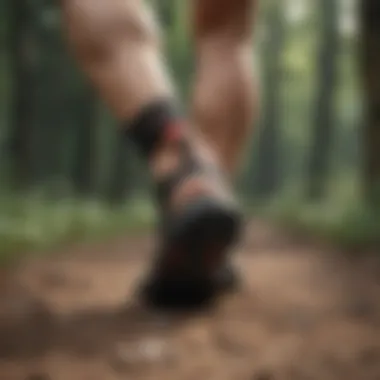
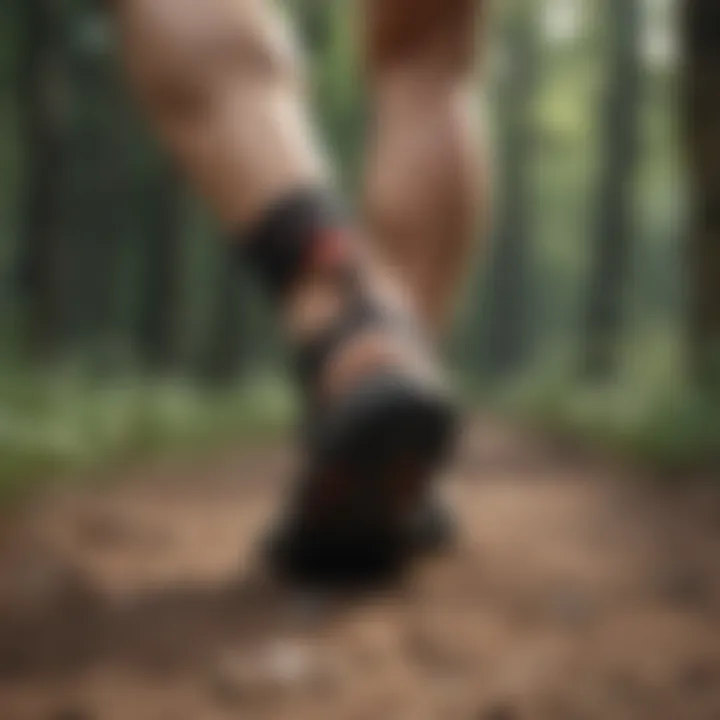
Personal preferences and lifestyle play crucial roles. Some people favor stability, particularly those with flat feet, as misalignment can lead to discomfort. However, this does not mean that one cannot explore options like Vivobarefoot shoes.
Considering any footwear change should involve self-reflection on personal foot health. Know your own foot needs before you switch. One must also think about how often and for what activities the shoes will be used.
It is also smart to evaluate the benefits offered by Vivobarefoot shoes. Their design promotes natural foot movement. However, since they lack traditional arch support, a personal assessment will clarify if they will suit your needs.
Personal Assessment of Foot Health
A thorough personal assessment of foot health is vital. This process includes understanding your foot condition, its characteristics, and any existing pain. Flat feet can lead to complications like plantar fasciitis or shin splints. Regular foot pain or discomfort can result from poor footwear choices. Hence, a self-assessment can help diagnose these issues.
To conduct an effective assessment, consider the following steps:
- Observe Foot Shape: Look at the arch and general structure of the foot. Flat feet typically have very low or no arch.
- Note Any Pain: Write down instances of pain, where it occurs, and during which activities.
- Evaluate Daily Activities: Determine how often you stand or walk and note any fatigue.
By answering these questions, you can gain insight into whether Vivobarefoot shoes meet your requirements. This evaluation enables you to match your foot health with appropriate footwear.
Consultation with Healthcare Professionals
Consulting with healthcare professionals can bring clarity to your footwear choices. A podiatrist, for example, has specialized knowledge about foot mechanics. They can provide insights into how different types of shoes, including Vivobarefoot, might influence your foot health.
Professional assessments often involve:
- Gait Analysis: This reveals how your feet function while walking or running. It identifies irregularities and potential issues.
- X-Rays or Imaging: These can show the structural alignment of your feet and any underlying problems.
Before switching footwear, discuss your specific needs with a healthcare provider. This conversation will guide you to the right decision, considering your flat feet. Be open about your lifestyle and how you use your feet.
"Foot health is integral to overall well-being. Investing time in assessment and consultation can lead to happier feet, preventing further complications."
By seeking professional advice, you ensure a safe transition to more minimalist footwear, which may offer advantages for flat feet if approached correctly.
Environmental Impact of Footwear Choices
The footwear industry has a significant impact on the environment. With an increasing focus on sustainability, considering the environmental impact of footwear choices is essential. This section evaluates Vivobarefoot and its implications for sustainability. Understanding how footwear affects the planet can shape consumer decisions based on ecological consciousness. In particular, minimalist brands like Vivobarefoot can lead to reductions in waste, as their production processes aim to be more eco-friendly.
Sustainability of Vivobarefoot Products
Vivobarefoot shoes are designed with sustainability in mind. The brand emphasizes the use of recycled and natural materials. Instead of synthetic components, many of their shoes feature sustainable textiles. This commitment reduces reliance on fossil fuels and lowers carbon emissions.
Some specific aspects of Vivobarefoot's sustainability practices include:
- Vegan-friendly materials: Many products use non-animal derived materials, promoting cruelty-free consumption.
- Recyclable shoes: The company encourages customers to recycle their old footwear through dedicated programs.
- Local manufacturing: By sourcing and producing locally, transportation emissions are minimized.
These initiatives contribute to a reduced environmental footprint, offering a viable choice for eco-conscious consumers.
Life Cycle Analysis of Footwear Materials
A comprehensive assessment of footwear materials involves a Life Cycle Analysis (LCA). This method evaluates the environmental impact of shoes from production to disposal. For Vivobarefoot, this analysis is critical in assessing how their products compare to traditional footwear.
Key elements in the life cycle include:
- Raw Material Extraction: Starting with the sourcing of sustainable materials reduces initial environmental damage.
- Manufacturing Process: Vivobarefoot aims for energy-efficient practices in manufacturing, helping cut down on carbon emissions.
- Usage Phase: Lightweight designs contribute to less energy consumption during wear, promoting more sustainable use.
- End-of-Life Management: The company provides options for recycling, helping to ensure that old shoes do not end up in landfills.
"The way we produce and dispose of footwear can have lasting effects on our planet. Choosing eco-friendly options is a crucial step toward sustainability."
Closure
Understanding the implications of using Vivobarefoot shoes for individuals with flat feet is crucial. The article emphasizes several key elements that inform consumers about the effectiveness of minimalist footwear in addressing flat-footedness. Such understanding helps in making educated decisions about footwear choices.
Summary of Key Insights
Vivobarefoot offers a unique approach to footwear, promoting better foot mechanics through its minimalist designs. Here are some highlighted insights:
- Foot Flexibility: The design encourages natural foot movement, enhancing flexibility.
- Sensory Feedback: The thin sole allows for increased ground feedback, helping users develop better balance.
- Natural Gait Patterns: The shoes support natural walking styles, important for overall foot health.
- Sustainability: Vivobarefoot emphasizes eco-friendly materials, aligning with growing sustainability concerns.
These insights illustrate how Vivobarefoot aligns its mission with the needs of people with flat feet while considering environmental impacts.
Final Thoughts on Vivobarefoot for Flat Feet
"Choosing the right footwear is not just about comfort, it is also about health and sustainability."
Opting for Vivobarefoot could lead to a positive change in your walking experience, but it is essential to consider individual needs and consult with experts for the best outcomes.







